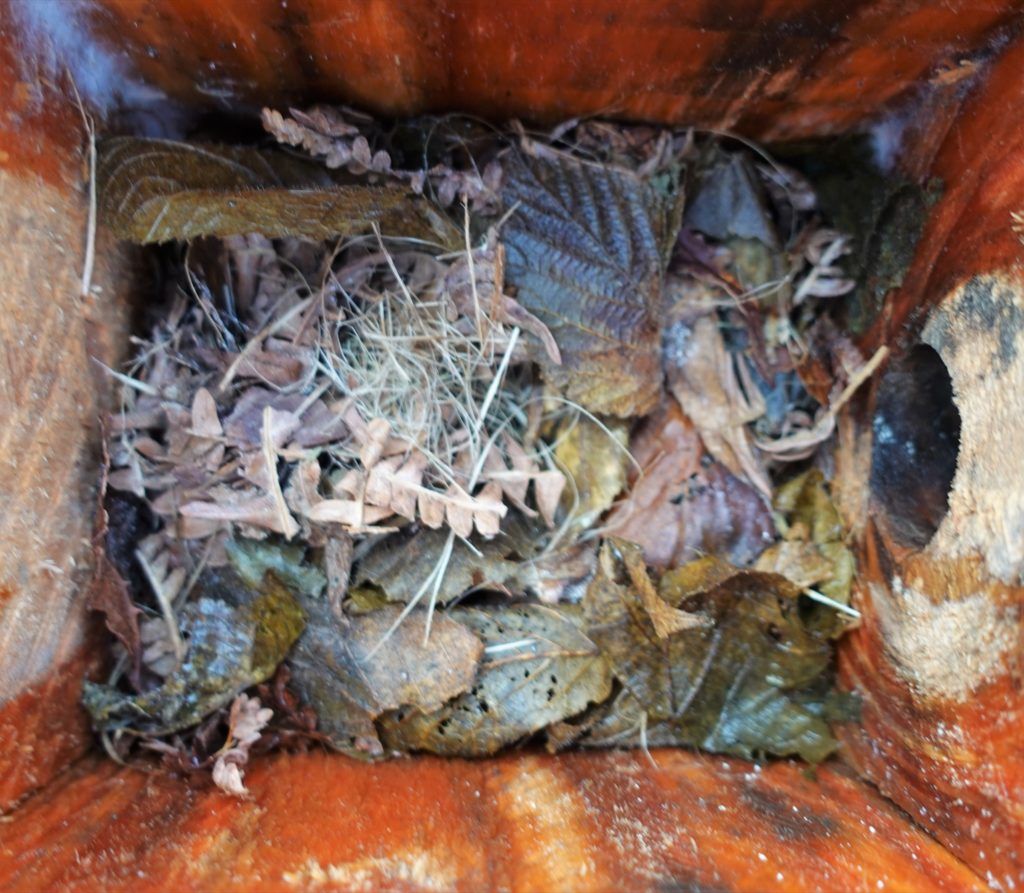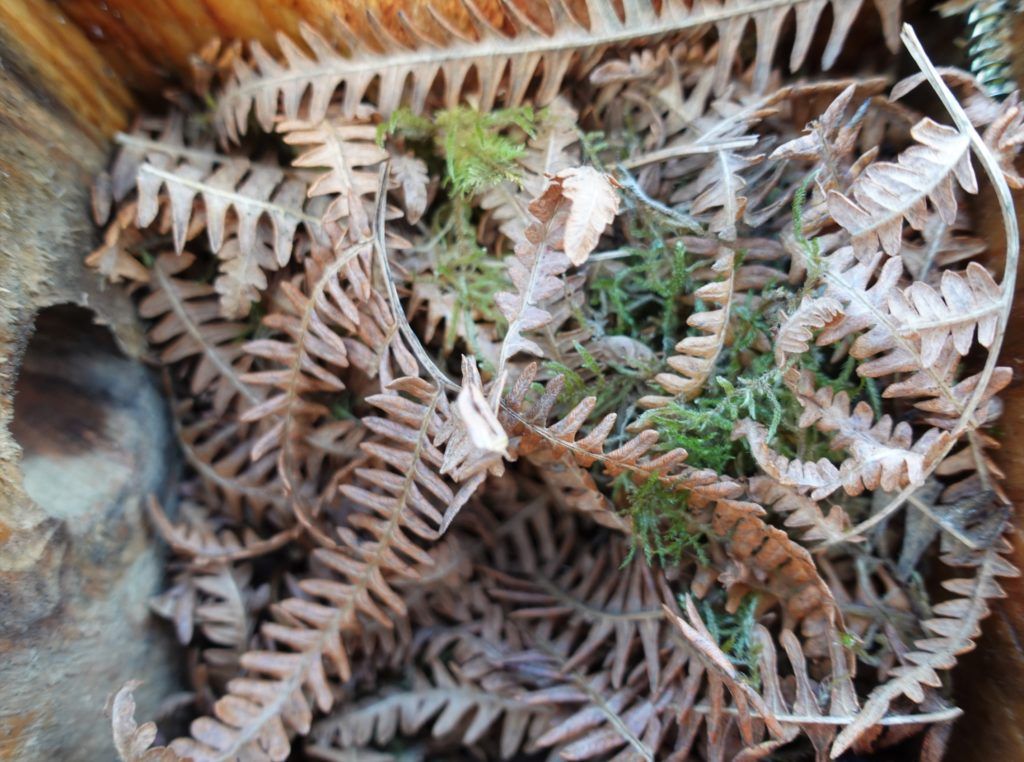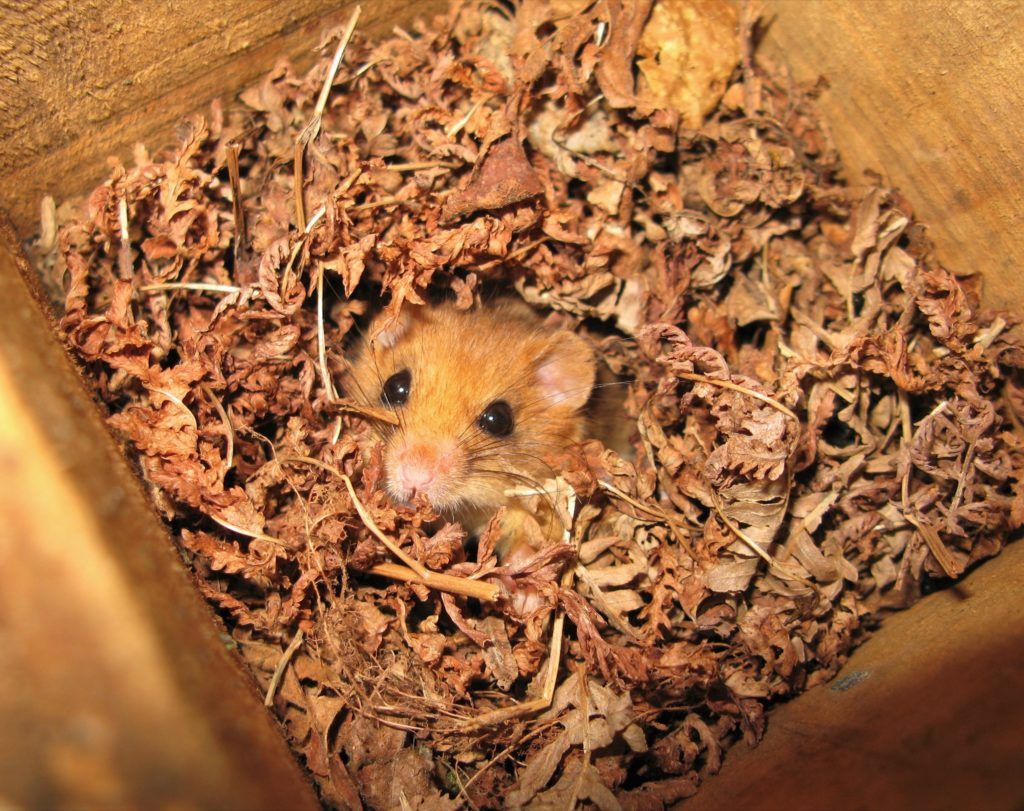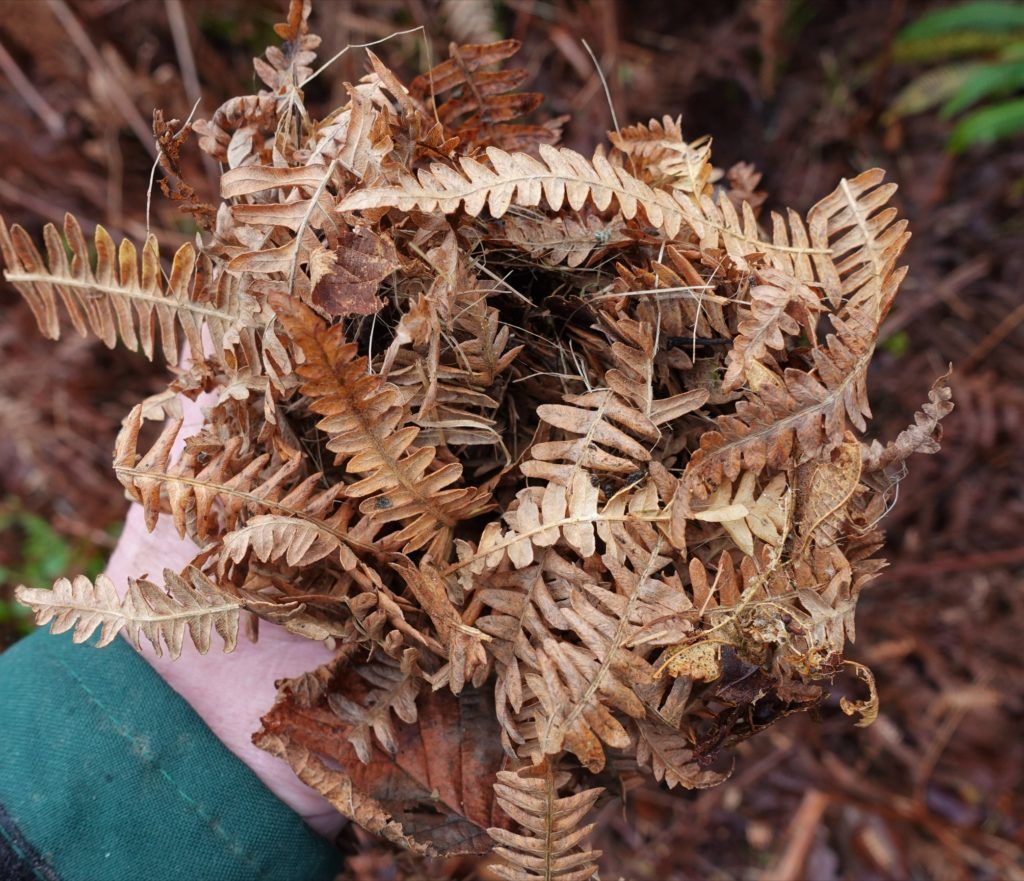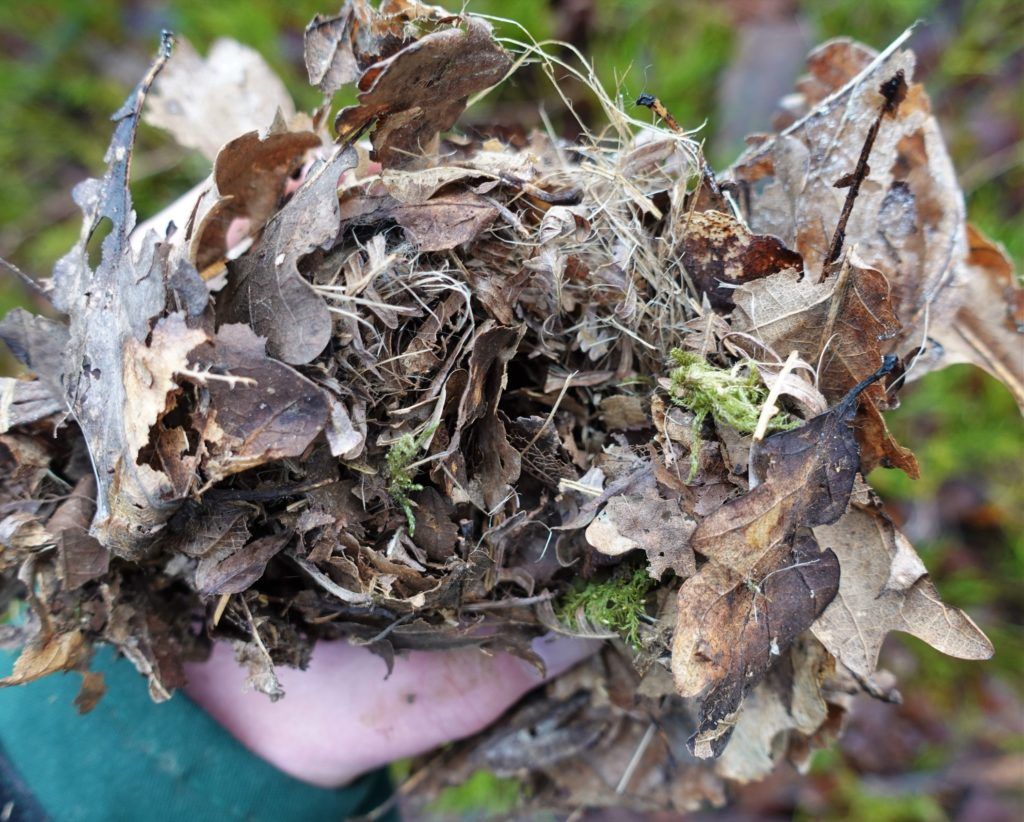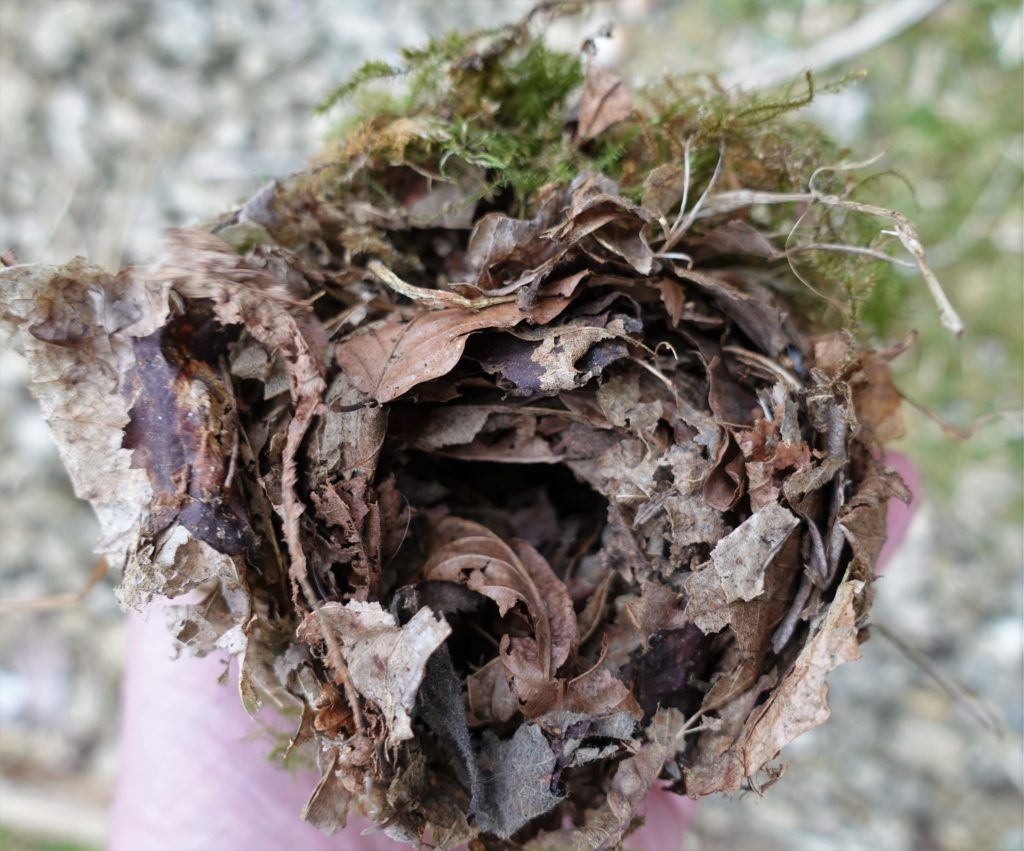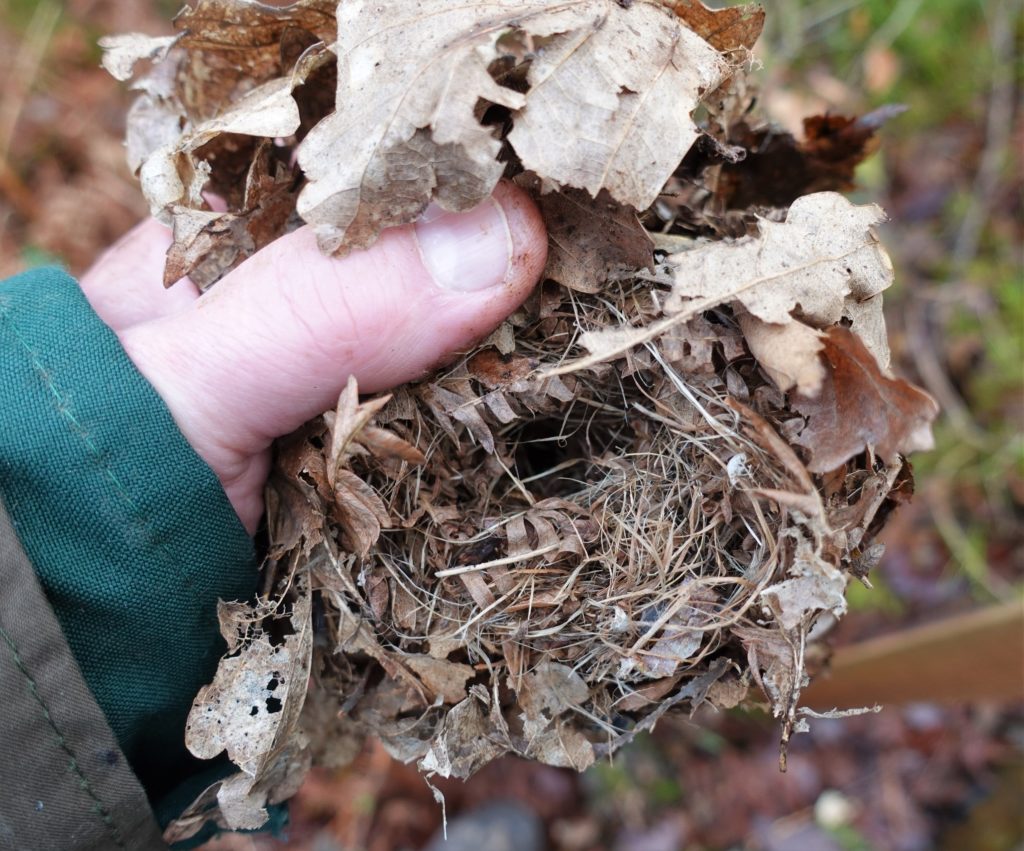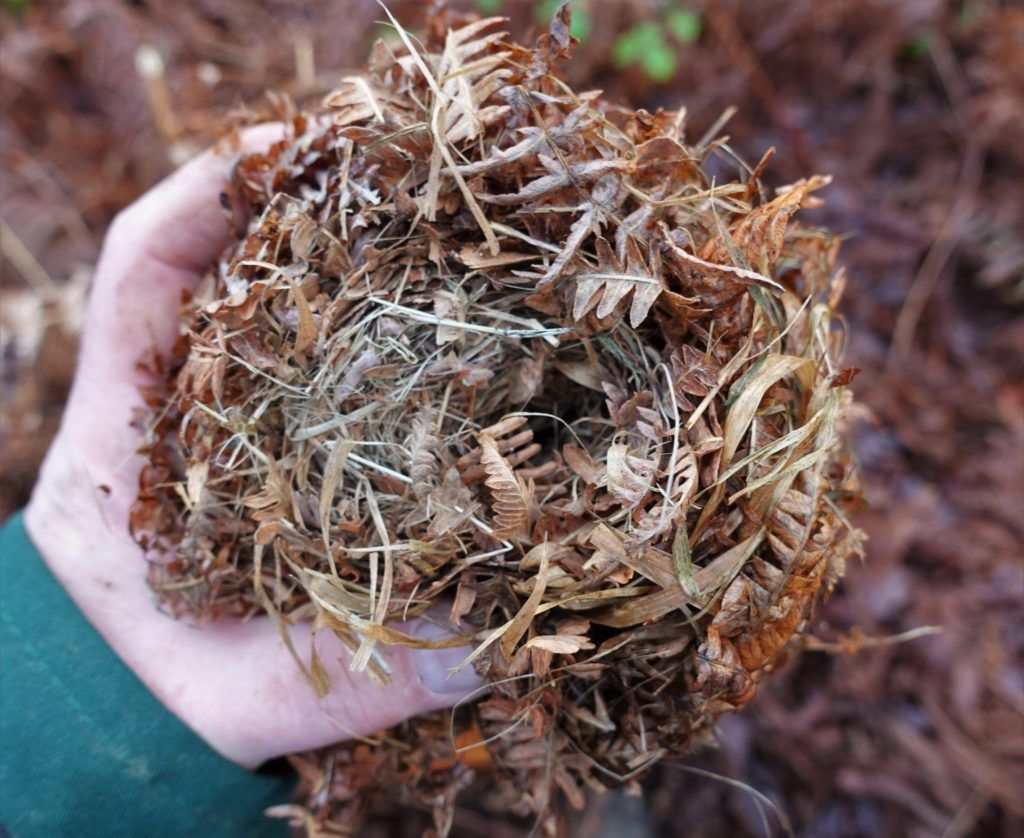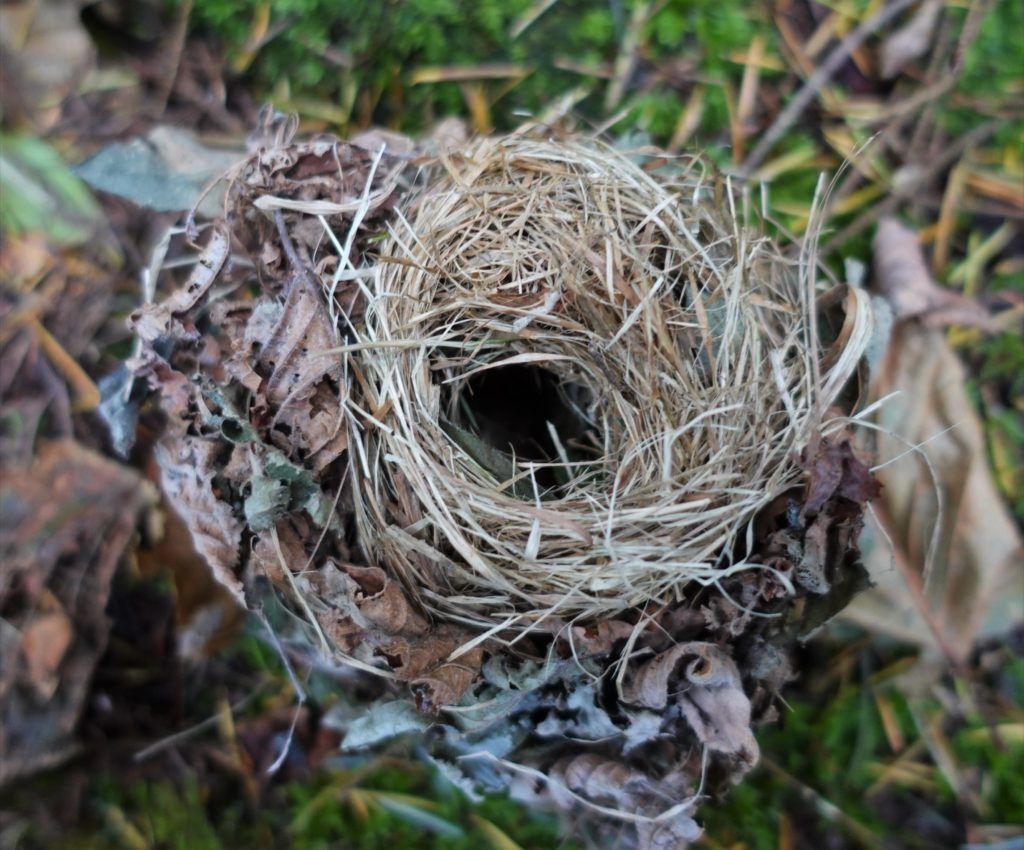Hazel dormice build different nests for different purposes: hibernating, breeding or just resting. Sometimes they don’t build a nest at all. But the different types of nests they do build might help us work out how much time dormice spend in different habitats. As part of my work at Fingle Woods, owned by the Woodland Trust and National Trust, I’m investigating how dormice respond to the habitat restoration work we’re doing.
Tracking dormice
We’ve put up footprint tunnels in areas of the wood that have been felled and are regenerating. Any footprints left by dormice can tell us that they’re active in the area – maybe feeding or just passing through. But to find out where dormice are spending more time, constructing and using nests, we’ve also put nest boxes up alongside some of the tunnels.
The footprint tunnels provide a useful snapshot of dormice at a point in time. This may reveal areas of the wood that they’re living in for long periods or, in some cases, short-term movements around the site that may be related to seasonal feeding. Or it might be young dormice dispersing from where they were born to a new part of the woods.
To get a better understanding of how much time dormice spend in the areas where we’ve found nests, I’ve devised a simple system to classify the nests into different types which can then help identify the level of activity or the relative time spent in a particular part of the woodland. Then I can work out whether, over time, dormice activity in that area is increasing or becoming more prolonged.
I’m assuming that, if a dormouse is prepared to invest more time in building a nest, they are also likely to be spending an increased amount of time in that area. In other words, a temporary nest or one in the early stages of construction may show that the dormice have only been in the area for a short period of time, while a fully formed nest could imply that there is an established, breeding population in that area. It may be a crude and simplistic measure, but it is a relatively simple method to use, to observe and record how our hazel dormice are using our wood as the felled areas restore and grow back.
Classifying nests into stages
I’ve classified the nests into three types or stages: stage 1 consists of a layer of leaves; stage 2 is a loose leafy nest and stage 3 is a nest consisting of a tightly woven ball. Stage 1 nests, which are rough and ready, suggest that dormice have only been in the area for a short time and haven’t invested a lot of energy in creating something more substantial. With stage 1 nests, it’s difficult to work out whether it was definitely built by a dormouse at all. Other small mammals may also make temporary homes in a similar way. If a dormouse is seen in the nest, then it’s easier to say with confidence that they’re likely to have used it. These nests are often made from materials that are really close by. The leafy layer is usually below the level of the nest box hole.
Stage 2 nests, those that are loose and leafy, possibly indicate that dormice remained in the area for slightly longer periods. These nests have plenty of layered leaves around the outside but little or no discernible woven core. The leafy structure often fills much of the nest box cavity and there’s a fairly distinctive ball-shaped structure to it. These types of nests indicate a greater investment of time by the dormouse who built it. It’s likely the dormouse spent longer in the area.
Stage 3 nests, which consist of tightly woven balls take much more effort to make, suggesting that the dormouse who made it stayed in the area for longer. These ‘typical’ dormouse nests have an easily identifiable woven core with a dense layer of leaves around the outside. The materials used for the inner core and outer insulating layers are usually distinctly different. Nests like these have often been used by several different dormice throughout the season and may even have been used as a maternity nest. As the season progresses the nest structure often deteriorates, especially if they’ve been used by numerous small mammals.
It’s important to note that many of these photos are taken in an area where bracken is the most common nesting material. The aim of our study is to see how dormice respond as woodland regenerates after a considerable number of diseased conifers were felled. As a consequence, there are limited trees across parts of the study area, and bracken makes up a large part of the local vegetation.
What the nests can tell us about dormice
As with any ‘simple’ classification system, there are difficulties, so some sensible judgement is needed. But we now have a good indication of how long a dormouse, or several dormice, have spent in an area over the course of a season. We’re looking forward to being able to compare the data each year to see how dormouse activity changes over time, as scrub develops, and young saplings mature. We hope to see an increase in the number of dormice (nests) where habitat is recovering. We expect them to be occupying areas of the woods that are regenerating and recovering as the habitat improves.
Another benefit of this simple classification scheme is that it can easily be used by volunteers who can determine whether dormice are visiting, feeding or breeding in an area. However, it’s important to remember that this method doesn’t include information about ‘wild’ nesting in the same areas. It could also be useful to compare nests found in nest boxes over a number of seasons to see how a dormouse population changes from year to year. We’ll be trialling this method at Fingle Woods to see if it provides useful data over a number of years. We’re hoping it will show a gradual increase in dormice activity, indicating that they’re spending more time in sub optimal habitat as the restoration is underway and then, finally, there will be evidence of dormice inhabiting the site long-term when the woodland restoration is more established.
Written by Matt Parkins. Matt is currently researching how woodland management affects dormice in Fingle Woods in Dartmoor. Find out more about the project.

